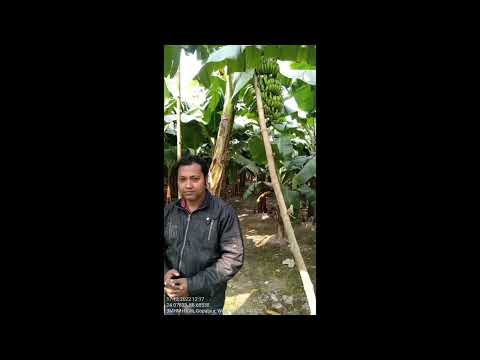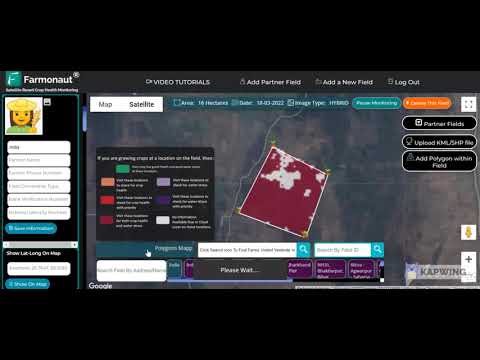Resilient Farming: How Georgia’s Cotton and Peanut Growers Thrive Despite Hurricane Challenges
“A resilient 2,100-acre farm in Georgia overcame hurricane challenges to thrive in cotton and peanut production.”
In the heart of Georgia’s agricultural landscape, we’ve witnessed an inspiring story of resilience and innovation. The Williams family, stewards of a 2,100-acre farmstead, have not only weathered the storms—both literal and metaphorical—but have emerged stronger, setting a new standard for sustainable farming practices in the face of adversity. Their journey through hurricane-related setbacks to agricultural triumph is a testament to the power of adaptability and determination in modern farmlife.
As we delve into this compelling case study, we’ll explore how this family has revolutionized their approach to cotton and peanut farming, implementing crop diversification strategies and weather-adaptive farming methods that have not only ensured their survival but propelled them to new heights of success. From innovative soil nutrient management techniques to cutting-edge agricultural equipment efficiency, the Williams family’s story is a blueprint for maximizing farm profitability in an era of climate uncertainty.

The Challenge: Farming in Hurricane Alley
Georgia’s coastal plains are no strangers to the wrath of hurricanes. For years, the Williams family faced the daunting task of preparing for and recovering from these devastating storms. October and September became months of anxiety, as these were peak hurricane seasons that often coincided with crucial harvest times for their cotton and peanut crops.
The challenges were multifaceted:
- Unpredictable weather patterns leading to crop damage
- Soil erosion from heavy rains and winds
- Infrastructure damage to farm equipment and storage facilities
- Market volatility affecting crop prices
- Increased input costs for recovery and replanting
These hurdles tested the family’s resolve, but also sparked a revolution in their farming approach. Let’s explore how they transformed these challenges into opportunities for growth and innovation.
Embracing Crop Diversification
One of the cornerstones of the Williams family’s resilience strategy was implementing robust crop diversification strategies. Recognizing the vulnerabilities of relying heavily on cotton and peanuts, they expanded their agricultural portfolio to include:
- Hay production for livestock feed
- Winter forage crops to maximize land use year-round
- Experimental plots of drought-resistant crop varieties
This diversification not only spread their risk but also opened up new market opportunities. By introducing livestock operations, particularly raising calves, they created a synergy between their crop and animal production systems. The manure from the cattle provided natural fertilizer for their fields, reducing their reliance on costly chemical inputs.
“Implementing weather-adaptive farming methods and crop diversification strategies led to improved yields and cost-effectiveness for this family farm.”
Innovative Soil Management Techniques
Understanding that the health of their land was paramount to their success, the Williams family invested heavily in soil nutrient management techniques. They implemented:
- Precision soil testing to tailor fertilizer applications
- Cover cropping to prevent erosion and improve soil structure
- Reduced tillage practices to preserve soil moisture and organic matter
These practices not only improved soil health but also increased the farm’s resilience to extreme weather events. The improved soil structure allowed for better water retention during droughts and reduced runoff during heavy rains, mitigating the impact of hurricanes on their crops.
Embracing Technology for Precision Agriculture
The Williams family recognized that agricultural equipment efficiency was key to maximizing farm profitability. They invested in cutting-edge technology, including:
- GPS-guided tractors for precise planting and harvesting
- Drone technology for crop monitoring and targeted pest management
- Advanced irrigation systems with soil moisture sensors
These technological advancements allowed them to optimize resource use, reduce waste, and improve overall yields. The precision cotton picker they acquired not only increased harvesting efficiency but also improved the quality of their cotton, fetching higher prices in the market.

Weather-Adaptive Farming Methods
Developing weather-adaptive farming methods became a crucial aspect of the Williams family’s strategy. They implemented:
- Flexible planting schedules based on long-term weather forecasts
- Installation of wind barriers to protect vulnerable crops
- Creation of water catchment systems to harness excess rainfall
These adaptations allowed them to work with nature rather than against it. By adjusting their planting and harvesting schedules to align with weather patterns, they minimized crop losses and optimized growth conditions.
Implementing Hurricane-Resilient Agriculture
The Williams family took proactive steps to create a hurricane-resilient agriculture system on their farm. Key strategies included:
- Constructing storm-resistant storage facilities for equipment and harvested crops
- Implementing an emergency response plan for rapid post-storm recovery
- Investing in crop varieties bred for wind resistance and quick maturation
These measures significantly reduced the impact of hurricanes on their operations. The ability to quickly secure equipment and harvested crops before a storm, and rapidly resume operations afterward, proved invaluable in maintaining productivity and meeting market demands.
Cost Reduction Strategies
To further enhance their resilience, the Williams family implemented several farm cost reduction techniques:
- Bulk purchasing of inputs like fertilizer and fuel to negotiate better prices
- Implementing energy-efficient systems to reduce electricity costs
- Engaging in DIY projects for minor repairs and maintenance
These strategies not only reduced operational costs but also fostered a culture of resourcefulness and self-reliance on the farm. The savings were reinvested into further improvements and innovations, creating a virtuous cycle of growth and efficiency.
Leveraging Agricultural Cooperatives
Recognizing the power of collaboration, the Williams family actively participated in local agricultural cooperatives. The benefits were numerous:
- Shared resources and equipment, reducing individual capital expenditures
- Collective bargaining power for better input prices and market access
- Knowledge sharing and mutual support among fellow farmers
This collaborative approach not only improved their economic resilience but also strengthened the entire farming community, creating a support network crucial for weathering both literal and metaphorical storms.
Innovative Marketing Strategies
The Williams family didn’t stop at production innovations; they also revolutionized their approach to markets:
- Direct-to-consumer sales channels for premium cotton products
- Value-added peanut products, such as artisanal peanut butter
- Agritourism initiatives showcasing their sustainable farming practices
These diverse revenue streams not only increased profitability but also built a loyal customer base that appreciated their commitment to quality and sustainability.
The Role of Technology in Farm Management
Embracing digital solutions played a crucial role in the Williams family’s success. They utilized advanced farm management software for:
- Crop planning and rotation scheduling
- Inventory management and financial tracking
- Real-time monitoring of field conditions and crop health
These technological tools provided data-driven insights that informed decision-making and improved overall farm efficiency. The family found particular value in satellite-based crop monitoring services, which allowed them to detect and address issues early, optimizing their resource allocation and improving yields.
For farmers looking to leverage similar technologies, we recommend exploring solutions like Farmonaut’s web application, which offers advanced satellite-based farm management tools.
Sustainable Practices for Long-Term Success
The Williams family’s commitment to sustainability went beyond immediate profitability. They implemented practices that ensured the long-term health of their land and community:
- Integrated pest management to reduce chemical pesticide use
- Water conservation techniques, including drip irrigation
- Participation in carbon sequestration programs
These practices not only improved the ecological balance of their farm but also positioned them favorably in a market increasingly concerned with sustainable production methods.
Adapting to Market Fluctuations
The Williams family’s resilience extended to their ability to navigate market volatility. They developed strategies to mitigate risk and capitalize on opportunities:
- Utilization of futures contracts to lock in favorable prices
- Flexible crop planning to respond to market demands
- Building strong relationships with buyers to secure premium contracts
This adaptability allowed them to maintain profitability even in challenging market conditions, ensuring the farm’s financial stability.
Continuous Learning and Innovation
The Williams family recognized that innovation was an ongoing process. They committed to continuous learning and improvement:
- Regular participation in agricultural workshops and conferences
- Collaboration with agricultural research institutions
- On-farm trials of new crop varieties and farming techniques
This culture of innovation kept them at the forefront of agricultural advancements, allowing them to constantly refine and improve their farming practices.
The Power of Community Engagement
The Williams family understood that their success was intertwined with the well-being of their community. They actively engaged in:
- Mentoring young farmers and supporting agricultural education programs
- Participating in local food security initiatives
- Advocating for policies that support sustainable agriculture
This community involvement not only strengthened their local support network but also positioned them as leaders in their industry, enhancing their reputation and market position.
Leveraging Data for Decision Making
In today’s data-driven world, the Williams family recognized the importance of leveraging information for better decision-making. They implemented:
- Advanced weather forecasting tools for precise planting and harvesting timing
- Soil analysis software for optimized fertilizer application
- Market trend analysis for strategic crop selection
By harnessing the power of data, they were able to make more informed decisions, reducing risk and increasing efficiency across their operations.
For farmers looking to integrate similar data-driven approaches, Farmonaut’s API offers access to valuable satellite and weather data that can be integrated into existing farm management systems.
Building a Resilient Future
The Williams family’s journey is more than a success story; it’s a roadmap for building resilience in modern agriculture. Their innovative approaches to cotton and peanut farming, coupled with their commitment to sustainability and community, showcase the potential for farms to not just survive but thrive in the face of climate challenges.
As we look to the future of agriculture, the lessons learned from the Williams family farm offer valuable insights for farmers worldwide. By embracing technology, diversifying crops, implementing sustainable practices, and fostering community connections, farmers can build operations that are not only profitable but also resilient to the challenges of tomorrow.
Williams Family Farm Resilience Strategies
| Farming Aspect | Pre-Hurricane Approach | Resilient Strategy | Estimated Improvement |
|---|---|---|---|
| Crop Diversification | 90% cotton, 10% peanuts | 60% cotton, 30% peanuts, 10% livestock | 25% increase in overall farm revenue |
| Equipment Efficiency | Traditional machinery | GPS-guided precision equipment | 15% reduction in fuel costs |
| Soil Management | Conventional tillage | Reduced tillage, cover crops | 20% improvement in soil health |
| Cost Reduction | Individual purchasing | Bulk purchasing, energy efficiency | 18% decrease in operational costs |
| Hurricane Preparedness | Basic storm protection | Storm-resistant storage, rapid response plan | 40% reduction in hurricane-related losses |
FAQs
Q: How did the Williams family initially adapt to hurricane challenges?
A: The family started by implementing flexible planting schedules, installing wind barriers, and creating water catchment systems to mitigate the impact of hurricanes on their crops.
Q: What role did technology play in the farm’s transformation?
A: Technology was crucial, with the family adopting GPS-guided equipment, drone technology for crop monitoring, and advanced irrigation systems to improve efficiency and crop yields.
Q: How did crop diversification benefit the farm?
A: Diversification spread risk, opened new market opportunities, and created synergies between crop and livestock operations, leading to improved overall farm resilience and profitability.
Q: What sustainable practices did the Williams family implement?
A: They adopted integrated pest management, water conservation techniques, and participated in carbon sequestration programs to ensure long-term land health and sustainability.
Q: How did the family leverage community engagement for success?
A: The Williams family actively mentored young farmers, participated in local food security initiatives, and advocated for sustainable agriculture policies, strengthening their community ties and industry position.
In conclusion, the Williams family’s journey from vulnerability to resilience in the face of hurricane challenges serves as an inspiring example for farmers worldwide. Their innovative approaches to cotton and peanut farming, coupled with a commitment to sustainability and community engagement, demonstrate that with the right strategies, farms can not only survive but thrive in challenging environments. By embracing technology, diversifying crops, implementing sustainable practices, and fostering strong community connections, farmers can build operations that are both profitable and resilient to future challenges.
For those looking to embark on a similar journey of agricultural transformation, tools like Farmonaut’s satellite-based farm management solutions can provide valuable support. We encourage farmers to explore these technologies and consider how they can be integrated into their own operations to enhance resilience and productivity.
Remember, the path to resilient farming is ongoing, requiring continuous learning, adaptation, and innovation. By following in the footsteps of success stories like the Williams family farm, and leveraging modern agricultural technologies, farmers can cultivate a more secure and sustainable future for themselves and their communities.






